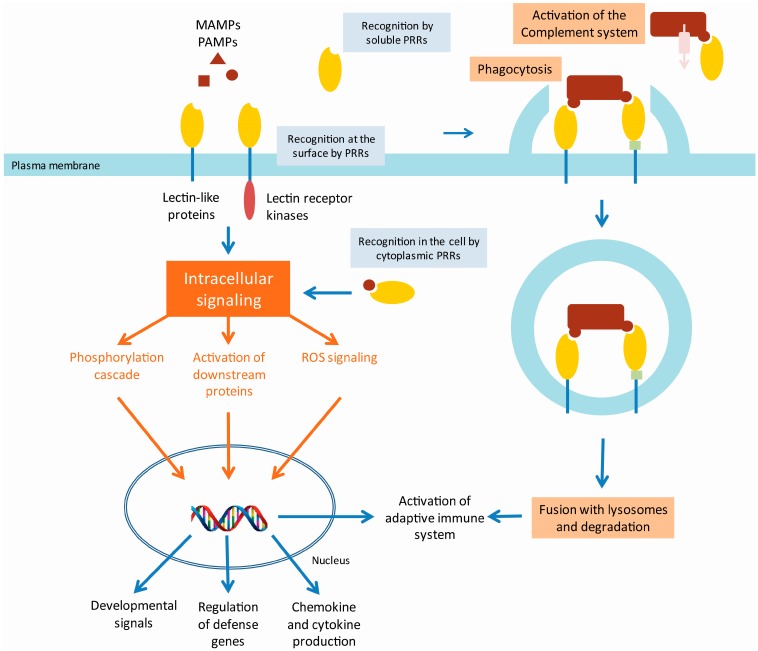Figure 1.
Model of animal innate immunity by lectin PRRs. Detection of pathogen/microbe-associated molecular patterns (P/MAMPs) by membrane bound pattern recognition receptors (PRRs) with lectin domains (lectin receptor kinases and lectin-like proteins) will initiate an intracellular signaling cascade on the one hand and lead to phagocytosis of the pathogen on the other hand. Soluble lectin PRRs can recognize P/MAMPs and subsequently bind to receptors that will trigger phagocytosis or can activate the complement system. Next to the recognition of P/MAMPs at the surface, cytoplasmic PRRs can sense the presence of bacterial peptidoglycan fragments which leads to activation of the intracellular signaling cascade. The intracellular signaling cascade can include downstream protein phosphorylation (e.g., MAPK cascade, TRAF/IRAK signaling), transcription factor activation (e.g., NF-kB, AP1, NFAT), or reactive oxygen signaling with cross-communication between the different components. This signaling cascade will lead to activation of stress-responsive or developmental signal-responsive genes or the production of chemokines and cytokines. In addition, the innate immune response can activate the adaptive immune response.

